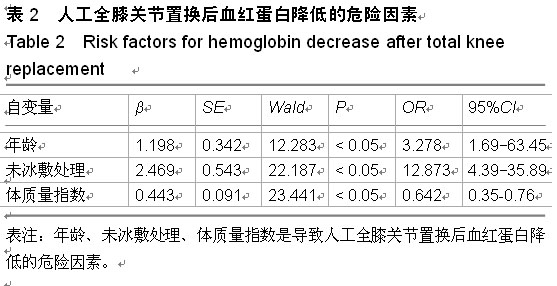| [1] 郑煜晖,傅捷辉,傅小杯.PFNA治疗老年股骨转子间骨折[J].中国骨与关节损伤杂志,2008,23(2):1015-1017.
[2] Thomas R, Willian M .骨科治疗的AO原则[M].北京:华夏出版社, 2003.
[3] 以AO原则置入解剖接骨板置入治疗肱骨髁间骨折37例:一所市级医院骨科5年病例回顾[J].中国组织工程研究与临床康复, 2010,14(17):3189-3192.
[4] Flahiff CM, Nelson CL, Gruenw ald JM, et al. Abiomechanical evaluation of anintramedullary fixation device for intert rochanteric fractures. J Trauma. 1993;35:23.
[5] 卢华定,蔡道章,王昆等.股骨近端髓内钉在股骨转子周围骨折中的应用[J].中国骨与关节损伤杂志,2005,20:246.
[6] 姜磊,禹宝庆,傅青格.闭合复位PFN治疗高龄股骨转子间骨折的体会[J].中国骨与关节损伤杂志,2006,21(1):59-60.
[7] Lenich A, Vester H, Nerlich M, et al. Clinical comparison of the second and third generation of intramedullary devices for trochanteric fractures of the hip-blade vs screw. Injury. 2010; 41:1292-1296.
[8] Mereddy P, Kamath S, Ramakrishnan M, et al. The AO/ASIF proximal femoral nail antirotation (PFNA): a new design for the treatment of unstable proximal femoral fractures. Injury. 2009;40:428-432.
[9] Kristensen MT, Foss NB, Ekdahl C, et al. Prefracture functional level evaluated by the New Mobility Score predicts in-hospital outcome after hip fracture surgery. Acta Orthop. 2010;81:296-302.
[10] 张经纬,蒋垚,张先龙.股骨转子间骨折不同手术方法比较[J].中华骨科杂志,2005,25(1):7-11.
[11] 黄俊,纪方,章浩.老年股骨转子间骨折手术方法的选择[J].中华全科医学,2008,6(12):1224-1226.
[12] 韩桂梅.老年股骨转子间骨折围术期康复训练护理[J].中国实用医药,2008,(16):172-173.
[13] 席小燕.外置入支架治疗老年股骨转子间骨折病人的围术期护理[J].全科护理,2014,12(9):775-777.
[14] Simmermacher RK, Ljungqvist J, Bail H, et al. The new proximal femoral nail antirotation (PFNA) in daily practice: results of a multicentre clinical study. Injury. 2008;39:932-939.
[15] Takigami I, Matsumoto K, Ohara A. et al. Treatment of trochanteric fractures with the PFNA(proximal femoral nail antirotation)nail system report of early results. Bull NYU Hosp Jt Dis. 2008;66(4):276-279.
[16] Sahin S, Ertorer E, Oztork I, et al. Radiographic and functional results of osteosynthesis using the proximal femoral nail antimta-tion (PFNA) in the treatment of unstable intertrochanteric femoral fractures. Acta Orthop Traumatol Ture. 2010;44(2):127-134.
[17] 唐佩福,姚琦,黄鹏.等.股骨近端髓内钉-螺旋刀片治疗高龄骨质疏松性股骨转子间骨折[J].中华创伤骨科杂志,2007,9(7): 622-624.
[18] 肖海军,薛锋.PFN与PFNA内置入治疗老年骨质疏松性股骨转子间骨折的比较研究[J].中国骨与关节损伤杂志,2010,25(4): 329-331.
[19] 宋建治,肖少雄,徐礼森.PFNA、PFN与DHS内置入治疗老年骨质疏松性股骨转子间骨折疗效对比[J].中国现代手术学杂志,2012, 16(4):305-308.
[20] Barton TM, Gleeson R, Topliss C, et al. A comparison of the long gamma nail with the sliding hip screw for the treatment of AO/OTA 31-A2 fractures of the proximal part of the femur: a prospective randomized trial. J Bone Joint Surg Am. 2010;92: 792-798.
[21] 史庆轩,胡宏伟,宁廷民.PFNA治疗高龄股骨转子间骨折隐性失血的发生机制及影响因素初步分析[J].中国矫形外科杂志,2014, 22(14):1262-1265.
[22] 石波,王军,康斌.PFNA治疗老年股骨转子间骨折的回顾性分析[J].中国骨与关节损伤杂志,2010,25(10):909-910.
[23] Parker MJ, Bowers TR, Pryor GA. Sliding hip screw versus the Targon PF nail in the treatment of trochanteric fractures of the hip: a randomized trial of 600 fractures. J Bone Joint Surg Br. 2012;94:391-397.
[24] 邵亮,徐耀增,耿德春.亚洲型股骨近端抗旋髓内钉治疗不稳定型股骨转子间骨折的效果观察[J].中国医药导报,2013,10(12): 166-168.
[25] 艾自胜,张长青,刘粤.股骨颈骨折内置入置入后随访资料的 Harris评分分析[J].中国修复重建外科杂志,2009,23(4): 435-439.
[26] 齐海,丁悦,许杰.Harris评分和X线在评价全髋关节置换置入后疗效中的作用[J] .中华关节外科杂志(电子版),2009,3(4):44-448.
[27] 黄必留,余楠生.人工全髋关节置换置入后Harris评分[J].现代临床医学生物工程学杂志,2004,10(1):44-45.
[28] Kennedy J, Noel J, O'Meara A, et al. A Long-term Retrospective Evaluation of Functional and Radiographic Outcomes of Pediatric Hip Surgery in Hurler Syndrome. J Pediatr Orthop. 2015.
[29] Lin S, Zhang CQ, Jin DX. Combination of modified free vascularized fibular grafting and reverse Less Invasive Stabilization System (LISS) for the management of femoral neck nonunion in patients thirty years of age or younger. Injury. 2015.
[30] Zeng Y, Qi X, Feng W, et al. One-sided hip-preserving and concurrent contralateral total hip arthroplasty for the treatment of bilateral osteonecrosis of the femoral head in different stages: short-medium term outcomes. BMC Musculoskelet Disord. 2015;16:133.
[31] Foucher KC, Freels S. Preoperative factors associated with postoperative gait kinematics and kinetics after total hip arthroplasty. Osteoarthritis Cartilage. 2015.
[32] Daltro GC, Fortuna V, de Souza ES, et al. Efficacy of autologous stem cell-based therapy for osteonecrosis of the femoral head in sickle cell disease: a five-year follow-up study. Stem Cell Res Ther. 2015;6:110.
[33] Yanbin L, Renbin L, Yan Z, et al. Treatment of long-segment fracture at middle-up part of femur with long proximal femoral nail antirotation. J Pak Med Assoc. 2014;64(12 Suppl 2): S64-S69.
[34] Novais EN, Heare TC, Hill MK, et al. Surgical Hip Dislocation for the Treatment of Intra-Articular Injuries and Hip Instability Following Traumatic Posterior Dislocation in Children and Adolescents. J Pediatr Orthop. 2015.
[35] Lee S, Frank RM, Harris J, et al. Evaluation of Sexual Function Before and After Hip Arthroscopic Surgery for Symptomatic Femoroacetabular Impingement. Am J Sports Med. 2015.
[36] Zhang Y, He W, Liu YW, et al. Comparison of the efftec between eccentric fixation and intramedullary fixation for treatment of intertrochanteric fractures. Zhongguo Gu Shang. 2015;28(2):117-121.
[37] Liu J, Wu J, Dou Y, et al. Assessment of quality of life after multiple arthroplasty. Beijing Da Xue Xue Bao. 2015;47(2): 285-288. |







